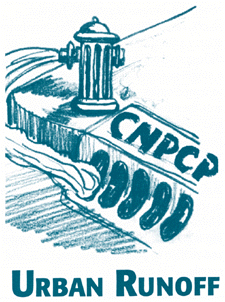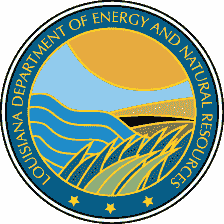Office of Coastal Management
Urban Brochure
|
Heavy rainfall in Louisiana rinses a variety of pollutants off the land, sending them into our canals, bayous, rivers, lakes, and estuaries. This "nonpoint source pollution"comes from scattered or diffuse sources and is not discharged from a single concentrated "point source" such as a pipe outlet. Nonpoint source pollutants are rinsed off streets and parking lots, and washed from crop fields, livestock pens, construction sites, and from lands on which some type of forestry operation is being conducted. Some of this pollution makes its way to our salt marshes, beaches, oyster beds, bays and other coastal waters. There pollutants can accumulate, threatening organisms ranging from shrimp, oysters, and redfish, to pelicans, bald eagles, ... and people. |
 |
WHAT ARE SOME EXAMPLES OF NONPOINT SOURCE POLLUTANTS CARRIED BY URBAN RUNOFF?
When carrying out development and land management activities in the cities, suburbs, and on roads in between, measures need to be taken for protecting our soil and water resources, or a variety of problems can result. Nonpoint source pollutants carried by urban runoff include sediment, heavy metals, sewage discharges, detergents, solvents, oxygen-demanding organic matter, bacteria, excess nutrients, pesticides, oils and lubricants. Other negative impacts might include disruptions of preexisting drainage patterns and loss of wildlife habitat due to land clearing. The presence and severity of these problems depend on site characteristics, weather conditions during the activities, and practices employed. We can't control the weather, but we can try to use the best practices that we have available for managing the land and its resources.
HOW IS LOUISIANA PLANNING TO ADDRESS THIS SET OF PROBLEMS?
Louisiana is developing a program to reduce pollution from "nonpoint" or widely diffuse sources that may impact coastal waters. While we can never stop all of the nonpoint source water pollution, there are practices that each one of us can adopt to help protect and conserve our soil and water resources. The program will consist of menus of recommended "best management practices" (BMPs), or actions that can be taken to address specific problem issues, as well as a plan to help bring about implementation of these practices. This Coastal Nonpoint Pollution Control Program, or CNPCP, is sometimes referred to as the "CZARA" program, the "6217" program, or the "Coastal Nonpoint Source" program. The Louisiana Dept. of Energy and Natural Resources (LDNR) is the designated lead agency coordinating its development. The CNPCP will address six major source categories: Agriculture, Forestry, Urban Runoff, Hydrology Modifications, Marinas and Recreational Boating, and Wetland Conservation. Each source category is broken down into as many as ten to fifteen problem issues called management measures. Management measures must use economically achievable approaches to reduce pollutants that would impact our coastal waters, applying best available technology. Louisiana is developing menus of recommended best management practices or BMPs to address each management measure. While not all of these best management practices will be appropriate for all places and situations, most of us can do at least something more or different to better manage our land and water.
Many different activities pollute urban runoff, ranging from household termite spraying to construction site earth moving. Space does not allow the listing of all 130 BMPs that have been developed to address nonpoint pollution carried by urban runoff. Listed below are fifteen urban runoff management measures, as well as some examples of BMPs that can be used to address one of the management measures, "Water Pollution Prevention." A more complete listing of Louisiana's urban management measures and BMPs for the Coastal Nonpoint Pollution Control Program is available from LDNR.
URBAN RUNOFF MANAGEMENT MEASURES
- Urban Runoff -- New Development
- Urban Runoff -- Watershed Protection
- Urban Runoff -- Site Development
- Construction: Erosion/Sediment Control
- Construction Site Chemical Control
- Existing Development
- New Onsite Disposal Systems (OSDS)
- Operating Onsite Disposal Systems
- Water Pollution Prevention
- Planning, Siting and Developing Roads and Highways
- Planning, Siting and Developing Bridges
- Roads, Highways, and Bridges: Construction
- Roads, Highways, and Bridges: Construction Site Chemical Control
- Roads, Highways, and Bridges: Operation and Maintenance
- Roads, Highways, and Bridges: Runoff Systems
BMPs for the MANAGEMENT MEASURE FOR WATER POLLUTION PREVENTION
This management measure is addressed to local officials, educators, community leaders and other urban land managers.
- Promote public education programs for proper use and disposal of household chemicals and hazardous materials. Encourage the use of biodegradable cleaners and other alternatives to hazardous chemicals.
- Hold "Amnesty Day" programs to promote responsible disposal of old paint cans and other household chemicals.
- Establish conveniently located collection centers for recycling used oil, antifreeze, and other chemicals.
- Encourage best management for lawns and landscaping, including efficient use of pesticides, fertilizers, and irrigation.
- Encourage onsite recycling of yard trimmings: distribute informational brochures, offer waste removal credits, and/or establish "Master Composter" programs.
- Reduce contamination of canals, bayous and streams, by promoting responsible management of pet wastes.
- Promote storm drain stenciling to reduce dumping into the drainage system.
- Encourage alternative designs and maintenance strategies for impervious parking lots.
- Reduce commercial sources of nonpoint source pollutants by encouraging pollution prevention assessments, and developing nonpoint pollution reduction plans and training materials for the workplace.
- Promote water conservation: minimize lawn irrigation and outdoor wash water to reduce the onsite runoff likely to carry pollutants.
- Encourage litter control by: a. Encouraging businesses to keep the streets in front of their buildings free of litter; b. Developing local ordinances restricting, or otherwise discouraging, food establishments from using disposable food packaging, especially plastics, styrofoam, and other floatables; c. Implementing "bottle bills" and mandatory recycling laws; d. Providing technical and financial assistance for establishing and maintaining community waste collection programs; e. Distributing public education materials on the benefits of recycling; and f. Developing "user-friendly" ways for recycling, such as curbside pick-up, voluntary container buy-back systems, and drop-off recycling centers.
- Promote programs such as Adopt-a-Stream to assist in keeping urban waterways free of litter and other debris.
- Promote proper operation and maintenance of Onsite Sewage Disposal Systems; discourage the use of septic system additives.
HOW CAN INDIVIDUALS GET INVOLVED?
Public participation and public education/outreach will be important in the Coastal Nonpoint Pollution Control Program. The Best Management Practices or "BMPs" are the "best practices" that we know of at this time, but they can be, and will be, improved, upgraded and replaced over time as we work out even better ways of managing our resources. We welcome and encourage the involvement of all interested Louisianians in this process. Additional comments and questions can be addressed to the:
| Louisiana Dept. of Energy and Natural Resources Office of Coastal Management P.O. Box 44487 Baton Rouge, LA 70804-4487 Telephone: 1 (800) 267-4019 email: Donald.Haydel@la.gov |
| Technical and graphic support provided by LSU Agricultural Center's Louisiana Cooperative Extension Service
|

